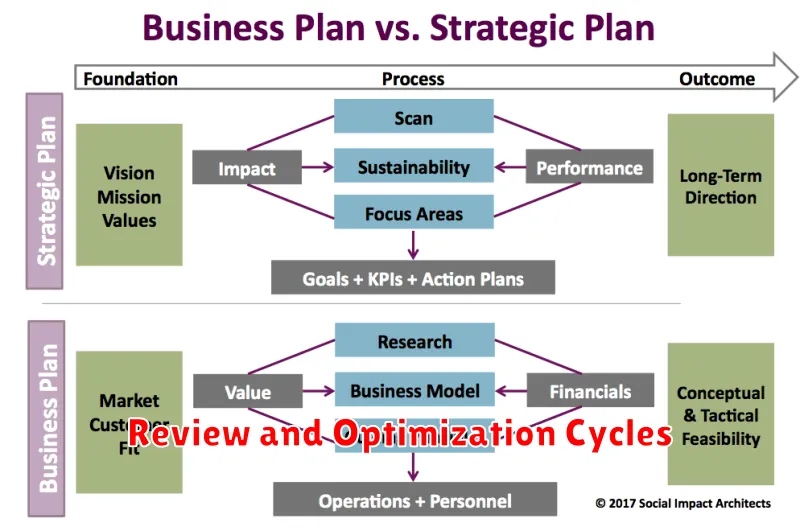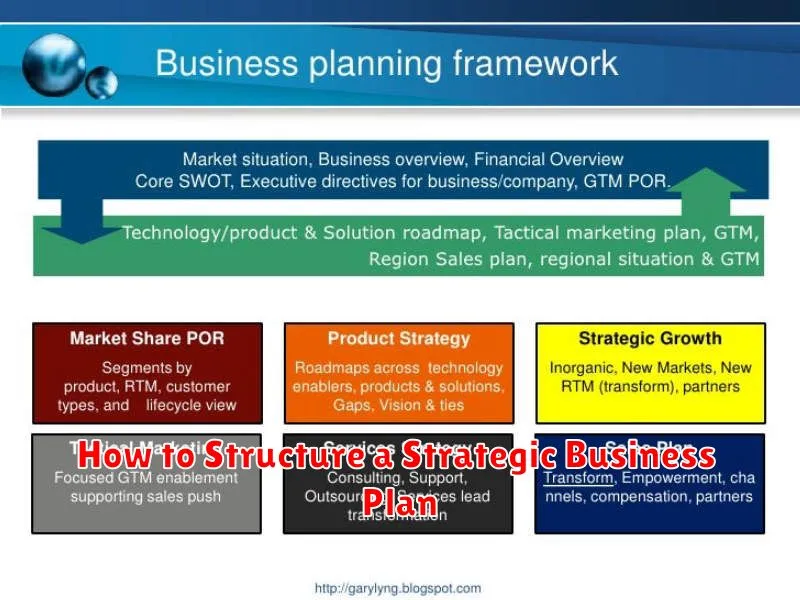Developing a strategic business plan is crucial for any organization, whether a startup or an established enterprise. A well-structured plan provides a roadmap for success, outlining the company’s goals, target market, competitive landscape, and financial projections. This comprehensive guide will delve into the essential components of a strategic business plan, offering a step-by-step approach to crafting a document that can attract investors, secure funding, and drive sustainable growth. Understanding how to structure a strategic business plan effectively empowers businesses to navigate challenges, capitalize on opportunities, and achieve their long-term objectives.
This article will equip you with the knowledge and tools necessary to create a compelling and actionable strategic business plan. We will explore the key sections, including the executive summary, company description, market analysis, competitive analysis, organization and management, service or product line, marketing and sales strategy, funding request, financial projections, and appendix. By meticulously addressing each of these elements, you can develop a robust strategic business plan that serves as a blueprint for achieving your business aspirations and ensuring long-term viability in the marketplace. This structured approach will enhance your ability to communicate your vision, secure buy-in from stakeholders, and ultimately, achieve strategic success.
Why Structure Matters in Strategic Plans
A well-structured strategic plan provides a clear roadmap for achieving organizational goals. Structure ensures all essential elements are considered, fostering a cohesive and focused approach. This reduces ambiguity and misinterpretations among stakeholders, promoting alignment and efficient execution.
A structured plan also facilitates monitoring and evaluation of progress. By breaking down the strategy into distinct components, it becomes easier to track performance against specific objectives and make necessary adjustments. This iterative process enhances adaptability and increases the likelihood of success.
Defining Vision, Mission, and Core Goals
This section clarifies the long-term direction and purpose of your business. It provides the foundation upon which your entire strategic plan is built.
Vision Statement
Your vision statement paints a picture of your company’s desired future state. It should be aspirational and communicate the ultimate impact you aim to achieve.
Mission Statement
The mission statement describes your company’s current purpose and how you will achieve your vision. It outlines your target market, core offerings, and key differentiators.
Core Goals
Core goals are the specific, measurable, achievable, relevant, and time-bound (SMART) objectives that will move your business towards fulfilling its mission and vision. These goals should be prioritized and aligned with overall strategic direction.
Market Research and Opportunity Analysis
This section delves into the specifics of your target market. Thorough market research is crucial. Identify your ideal customer profile, including demographics, needs, and purchasing behaviors. Understanding your competition is equally vital. Analyze their strengths, weaknesses, and market share to identify opportunities for differentiation.
Opportunity analysis focuses on identifying unmet market needs or areas where your business can excel. Clearly define the problem your business solves and how your solution stands out. This section should demonstrate a clear understanding of the market landscape and the potential for your business to thrive within it.
Setting Strategic Objectives (Short & Long-Term)
After defining your mission and vision, establish clear and measurable strategic objectives. These objectives bridge the gap between your current state and desired future, serving as guideposts for all subsequent planning activities.
Short-term objectives, typically within one year, focus on immediate priorities and achievable milestones. They provide quick wins and build momentum towards long-term goals. Examples include increasing market share by a certain percentage or launching a new product.
Long-term objectives, usually spanning three to five years or more, represent the ultimate aspirations for your business. They should be ambitious yet realistic, aligned with your overall vision. Examples include achieving a specific revenue target or expanding into new geographic markets.
Ensure all objectives are SMART – Specific, Measurable, Achievable, Relevant, and Time-bound. This framework provides clarity and accountability, facilitating effective progress tracking and performance evaluation.
Building Measurable Action Plans

A strategic plan remains a document unless translated into actionable steps. This involves creating measurable action plans that detail specific tasks, responsibilities, timelines, and, crucially, metrics.
Each action within the plan should have a clearly defined owner responsible for its execution. Deadlines provide a timeframe for completion, promoting accountability and progress tracking.
The core of measurable action plans lies in defining key performance indicators (KPIs). These quantifiable metrics track progress towards strategic objectives. Examples include revenue growth, market share, customer acquisition cost, or employee satisfaction. KPIs should be SMART – Specific, Measurable, Achievable, Relevant, and Time-bound.
Aligning Departments and Resources
Aligning departments and resources is crucial for successful strategic plan execution. This involves ensuring all departments understand the overall strategic goals and how their individual objectives contribute. Resource allocation must directly support the prioritized strategic initiatives.
Start by clearly communicating the plan to all departments, emphasizing their roles and responsibilities. Establish key performance indicators (KPIs) to track progress and hold departments accountable. Regularly review performance against these KPIs and make necessary adjustments to resource allocation to maintain alignment and momentum.
Identifying Risks and Contingency Plans
A crucial aspect of strategic planning involves identifying potential risks that could hinder the achievement of your business objectives. This requires a proactive approach to foresee challenges and develop appropriate contingency plans.
Risk assessment involves analyzing potential threats and their potential impact on your business. Categorize risks by their likelihood and severity. This analysis will help prioritize which risks require the most attention and resources.
Contingency planning is about developing alternative courses of action to mitigate the impact of identified risks. For each significant risk, formulate a specific plan outlining the steps to be taken should the risk materialize. This ensures your business remains resilient and adaptable in the face of unforeseen circumstances.
Communication and Stakeholder Engagement
Effective communication is crucial for successful strategic plan execution. A clear communication plan ensures all stakeholders understand their roles, responsibilities, and the plan’s overall objectives. This includes establishing communication channels, frequency, and methods for different stakeholder groups.
Stakeholder engagement is essential for building buy-in and support. Identify key stakeholders (e.g., employees, investors, customers) and tailor communication to their specific needs and interests. Regular updates and feedback mechanisms ensure alignment and address any concerns proactively.
Implementation and Timeline Mapping
Implementation is the process of putting your strategic plan into action. This involves assigning responsibilities, allocating resources, and establishing clear processes.
Timeline mapping is a crucial part of implementation. It involves creating a visual representation of when key activities will take place and their expected durations. This provides a roadmap for your plan and allows for progress tracking.
A clear timeline helps ensure that all activities are completed on schedule and contributes to the overall success of the strategic plan. Consider using a Gantt chart or other project management tools to effectively map your timeline.
Review and Optimization Cycles

A strategic business plan isn’t a static document. Regular review and optimization are crucial for its effectiveness. These cycles ensure the plan remains aligned with evolving market conditions, internal capabilities, and strategic objectives.
Establish a clear review schedule. This could be quarterly, bi-annually, or annually, depending on the nature of your business and industry. During these reviews, assess key performance indicators (KPIs) to measure progress against targets. Analyze variances and identify areas needing adjustment.
Optimization involves making necessary changes to the plan based on review findings. This could include revising targets, adjusting strategies, reallocating resources, or refining operational processes. Document these changes and communicate them clearly to all stakeholders.

